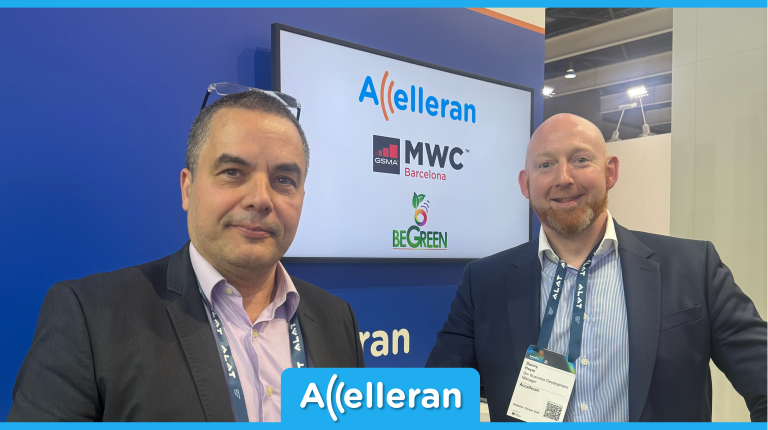
Powering Offshore Wind with Private 5G: Smarter, Safer, and More Resilient Operations
Offshore wind needs smarter operations. Explore how Private 5G enables real-time monitoring, predictive maintenance, and safer crews
The Accelleran Academy is your go-to source for the latest updates on 5G use cases, RAN Intelligence, and more.
Follow Accelleran for Real-Time Updates.

Operating as specialist tools for the purposes of enhancing network automation and intelligence, xApps and rApps sit on a RAN Intelligent Controller (RIC). They are created by developers, including Accelleran, to maximise the operational efficiency of the RAN – providing key management features and functionality.
To better understand the purpose of an xApp and an rApp, we first have to revisit the RAN Intelligent Controller.
Here we can see the overview of Accelleran’s dRAX platform, with both an xApp and rApp sitting on Accelleran’s RAN intelligent Controller (RIC). You can read more about The RAN Intelligent Controller on our RIC page.
Often referred to as Near-RT and Non-RT. The Non-RT functionality refers to the portion that manges events that only require a response time of 1 second or more. This can include functions such as service policy management and the gathering of analytics from the RIC.
The Near-RT RIC controls functions that typically take 10 milliseconds to 1 second to complete. Areas where that kind of speed is of critical importance – such as real time optimisation actions.
Now we know about the RIC, we can use the above to understand the difference between an xApp and an rApp. Both are fundamentally for the same purpose – network automation.
An rApp is specifically designed to run on the Non-RT RIC. As mentioned, the Apps that do not require response times of under one second. Now it’s easy to guess what an xApp is for – for the Near-RT RIC!
The best thing about it is they can be developed by anyone, as is the nature of open platforms. Some of the Apps developed by Accelleran and our 3rd party partners can be viewed on our RAN Intelligent Controller page. Our RIC allows for developer teams of any size to download our SDK and get started creating xApps and rApps to bring intelligence to the RAN.
rApps and xApps are a cause of some excitement for many operators and owners of Private 5G networks. Imagine for example, an App which automatically tweaks the power useage of your Radio Units based on how they are actually being used – rather than running on full power endlessly.
This xApp can automates the network monitoring process and provide real-time insights into the performance of the OpenRAN network.
It can detect network anomalies, identify performance bottlenecks, and provide network operators with real-time alerts and notifications.
This xApp optimises the energy efficiency of the network. It can analyse the energy consumption patterns of different network elements and identify opportunities for energy savings.
The energy and cost savings will vary depending on the size and architecture of the network. If you’d like to hear more, get in touch today and book a meeting with us.
A RAN Intelligent Controller (RIC) platform is a software-defined component of the Open Radio Access Network (O-RAN) architecture. It provides centralised control and management of the RAN elements, optimising network performance and resource utilisation through the deployment of xApps (near real-time applications) and rApps (non-real-time applications).
xApps and rApps are applications that run on the RIC to enable network automation. xApps are designed for near-real-time (Near-RT) operations, requiring rapid response times, typically between 10 milliseconds and 1 second. rApps, on the other hand, operate in non-real-time (Non-RT) environments, handling tasks that can tolerate response times of 1 second or more.
The primary difference between xApps and rApps lies in their operational timing. xApps are built for Near-RT RIC, which manages tasks requiring very fast response times (10 milliseconds to 1 second). rApps are meant for Non-RT RIC, handling functions that can afford slower response times (1 second or more).
Yes, both xApps and rApps can be developed by third parties. The open nature of the RIC platform allows developers to create customised applications that enhance the functionality and intelligence of the RAN.
Examples of xApps include applications for network monitoring and energy efficiency. For instance, a network monitoring xApp can provide real-time insights into network performance and detect anomalies. An energy efficiency xApp can optimize the energy consumption of network elements, leading to cost savings.

Offshore wind needs smarter operations. Explore how Private 5G enables real-time monitoring, predictive maintenance, and safer crews

The event brought together leading voices from across the global telecoms ecosystem to explore the state of the Open RAN market and showcase ongoing innovations

MWC Barcelona 2025 was a successful event for Accelleran, with more of our colleagues attending than ever before. Over the course of the week, we